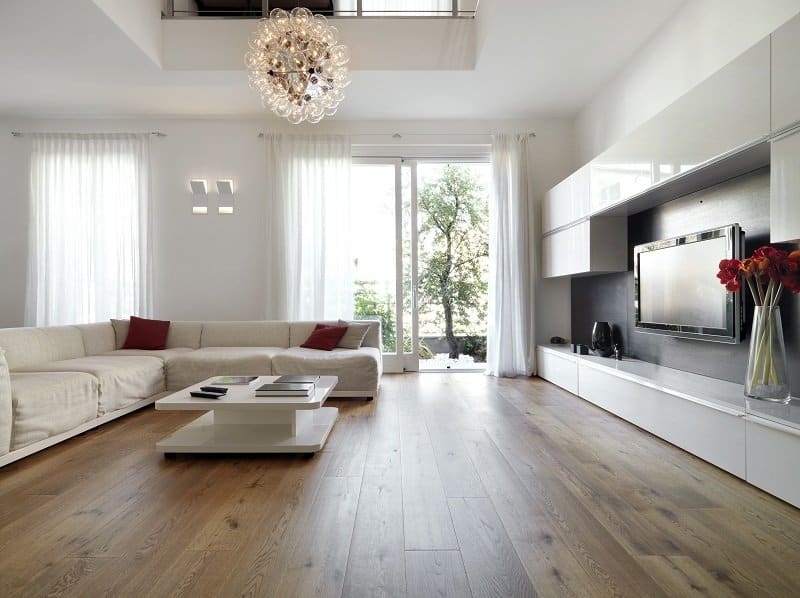Wood Flooring screed
Parquet screed: laying wooden floor, also underfloor heating
The screed for parquet and wood flooring is a mixture of Portland 325R cement, river sand with a grain size of 0.4-0.7 mm and water, dosed with about three quintals of cement per cubic meter. This compound should be cast on floors, crawl spaces and floors directly or after the interposition of insulating materials or waterproofing sheaths.
For the glued installation of the wooden floor, the parquet screed must have the following characteristics:
to) Thickness : the thickness of the screed must be uniform and sufficient to guarantee rigidity to the shear stresses generated by the normal expansion and shrinkage movements of the wood.
– cement screed: 4-6 cm
– anhydrite screed: 3-5 cm
Values lower than the minimum ones mentioned above do not give adequate safety to hold back any lifting. Higher values require longer drying times.
b) Rigidity : the screed must be sufficiently rigid to withstand, without deformation, the static and dynamic loads expected on the flooring.
c) Superficial hardness : by vigorously scratching the surface of the screed with a steel nail, no deep cuts, crumbling or dust should be formed.
d) Seasoning : before laying the parquet, the installer must always check for the presence of excessive humidity in the screed, checking it both on its surface and in depth. The screed must always be placed on a vapor screen (upper floors) or on a vapor barrier (on the ground floor) that isolate it from everything below.
The drying times of the various materials used for the construction of the screed are different in relation to their composition, their thickness and the environmental climatic conditions.
In general, it should be remembered that the drying time d the a screed cements uncle is about 10 days for each dinner t imetro d the thickness in a dry period and 15 days in a per the I hear damp.
is) Moisture content : the measurement of the moisture content of the screeds is carried out with electric instruments with digital reading or with carbide devices:
– the Electric hygrometers they cannot be used for an absolutely precise verification of the humidity of the screeds, but only as general indicators;
– the Carbide hygrometers they directly determine the moisture content in the screed by chemical reaction. The evidence, in this case, is the most reliable and legally recognized. At the time of measurement it is advisable to check for the presence of a screen or vapor barrier under the screed;
– it vapor screen has the function of limiting the passage of water vapor and is represented by a polyethylene sheet with a minimum thickness of 0.15 mm;
– the vapor barrier has the fun zi one to prevent the passage of water vapor and is represented by a bituminous sheath with a thickness of 3/4 mm.
f) Level and altitude : before casting the screed, it is necessary to know what type and thickness of parquet will be installed, in order to be able to precisely fix the level in relation to that of the other floors.
g) Surface finish : the surface finish of the screed must be sufficiently smooth, flat and without undulations but also slightly rough and absorbent to allow the adhesion of the glue.
h) Cleaning : the surface must be free from dust, rubble, remains of mortar or gypsum and any other substance that is incompatible with the adhesive capabilities of the adhesive used.
IMPORTANT
The traditional and fiercest enemy of the wooden floor is humidity. It is absolutely unthinkable to lay parquet on damp substrates or substrates subject to moisture returns. The dimensionally more stable wood, the more tenacious adhesive, can do nothing against the force of movement of the wood caused by humidity.
Insights:






